-
Posts
48 -
Joined
-
Last visited
Content Type
Profiles
Forums
Blogs
Gallery
Events
Store
Posts posted by diwe
-
-
-
Tony: This is an interesting and plausible explanation. The QVC buttons on the tunic have the same maker Pitt & Co. So this would make the tunic post 1895 I assume. Best Dirk
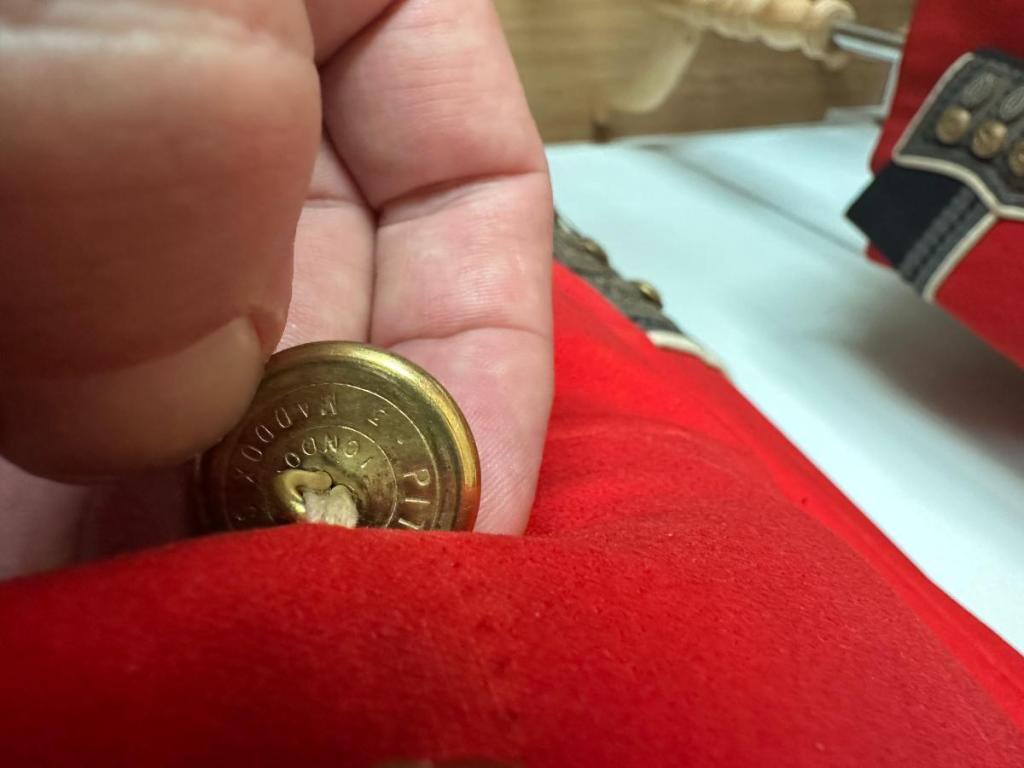 b
10 hours ago, Gordon Craig said:
b
10 hours ago, Gordon Craig said:diwe,
Interesting uniform and questions. Makers labels often have the name of the individual defaces somehow and I have never been able to find a satisfactory method of uncovering the information that I wanted. Perhaps if you posted pictures of the label someone would be able to offer some solutions to you and the rest of us.
Regards,
Gordon
Hi Gordon, enclosed please find a picture of the label or better what is left.... Best Dirk
0 -
-
I usually collect uniforms from Southeast Asia, mainly Thai, but decided to add two tunics of the Foot Guards to my collection as they heavily influenced the creating Thai uniforms during the Victorian age. One of my tunics displays for the Scots Guards displays buttons on the front, rear, and shouder boards that were worn during the reign of Queen Victoria with the distinctive QV crown. (1) However, the buttons on the cuffs are a different style (Edward VII) (IMG 1028 and 1030)? I consulted Howard Riply's Buttons of the British Army but am still trying to identify the crown. I assume that this officer served during the reign of Queen Victoria and then Edward VII. Please correct me if I am wrong but I read hat the officers were allowed to continue to wear the buttons with the crown or cypher of the previous monarch but when they needed replacement they had to replace the entire set. So this is an interesting combination. (2) My second question is about the tailor label the uniform sports. Is there a way via a chemical process to make it visible again? Thanks so much!
1 -
-
12 hours ago, Farkas said:
Just to clarify, the other topic you posted only showed the shoulder boards which despite seemingly being incomplete were in fact used briefly (details in my reply there) and on their own look fine to me.
The pictures on this topic show the complete tunic and, as you say yourself, the button arrangement does not match a Coldstream pattern.
The collar, cuffs, shoulder boards and tail may well be a ‘related set’ but they are not original to this tunic.
The tail button detail is cut at the top.
To me, the collar is badly attached.
The shoulder boards are way too short.
The cuff tunic material clearly has scars where the previous detail has been removed.
The lining is red with a white tail facing whereas it should be white with a red tail facing.
& as you said the buttons of a Coldstream Guards tunic would certainly be in pairs, regardless of its age, the rank or other.
The guy selling it is a good guy in my experience but in this case I think the £200 price tag is indicative of the issues he knows it has.
Possibly it was simply an innocent way that someone showcased their set of details and it might be worth 200 for them alone if you like it.
tony.
Hi Tony: Thanks so much about your informative comments. I also know the seller and bought from him before. He is a great guy and he was also curious about what we would find out about this strange tunic. So thank you again for you detailed response. It is really highly appreciated!
0 -
Dear forum members! I would like toi ask for some assistance. I came across this Coldstream Guard's tunic with some strange modification. First, the distance of the buttons (or button holes) is incorrect, they should be in pairs. Secondly, the should boards spot the insignia of a Brigadier (general) or at least a cross and baton. It is my understanding that the ceremonial uniforms of the Guard Regiments stopped at the (full) colonel rank even for the Colonel of the Regiment and Colonel-In-Chief, who hold the rank of general officers. So is this some fantasy composite or is there another plausible explanation? Thanks so much and Happy Holidays!
0 -
Greetings! I am trying to identify a particular medal on the medal bar (see green arrow) of Admiral Hisaharu Kubota. He served from 1941-43 as a military attaché in China during the Wang Jingwei regime. It does not seem to be a Japanese decoration nor a decoration of Reorganized National Government of the Republic of China. Does anybody have an idea? Thanks so much.
0 -
I have a question regarding the scarlet cloth tunic for the foot regiments, in particular the Coldstream Guards. It was my understanding that general officers associated with the Coldstream Guards (or another foot regiment with the Household division), e.g. the Colonel of the Regiment (a ceremonial position), which is currently Lieutenant General Sir James Bucknall, do only wear full colonels insignia on the scarlet cloth tunic. I have seen images of Lieutenant General Sir James Bucknall wearing the scarlet cloth tunic (Home Service Dress Tunic) of a (full) colonel. The same applies to the Colonel-In-Chief, HM King Charles III. Nonetheless, I came across a scarlet cloth tunic for the Coldstream Guards that spots a sword and baton (i.e. insignia for a general officer) and saw rank insignia for a general including the Star of the Order of the Garter on a frock coat for generals. Can someone explain? Thanks so much!
0 -
On 31/08/2016 at 12:35, hoveyli said:
hallo everyone
I have this medal,This medal looks very rare,But I not have many information of this medal,in my SIam decoration book ,not see this medal,And it have the same ribbon of Haw campaign medal ,this medal is made in france ,Does some friend can help me find more information ?
Best regards Hoveyli
This is the Silver Prabas Mala Medal from Siam to Commemorate the 1987 European Trip of the Siamese King Rama V.
0 -
I am actually in the process of selling the uniform. Any interest?
0 -
It seems that ribbon bars were attached to tunics once the soldier had achieved veteran status.
0 -
On 31. Dezember 2015 at 04:24, Lukasz Gaszewski said:
Lukasz: Thank you so much for your assistance. What still confuses me is that the tunic is the pre-1956 model according to the buttons and the silver (not gold) stars on the shoulder boards. Did he attach the ribbon bar later? Typically you would see original medals on the parade tunic only in the later years a ribbon bar.
0 -
I came across an offer for a Soviet Konter (Rear) Admiral's (ко́нтр-адмира́л) Uniform (Model 1943-45), without shoulder boards, mismatched cap (not for flag officers), pants and dagger belt. I am trying to find a reasonable price. The provenience is questionable so I am treating it as a non-identified set. Any suggestions? Thanks so much in advance!
0 -
Ribbon Bar on M1954 Colonel General's Parade Tunic?Dear fellow collectors:
I stumbled in Moscow over a M1954 Colonel General's Parade Tunic (Staff Corps with violet piping). The only thing that is unusual is the ribbon bar that in my opinion does not belong on a parade tunic. However, the ribbon bar seems to be relatively old. Any ideas?
Thanks so much!
Best
Dirk0 -
Thanks so much!
0 -
-
Could anyone please help identifying the branch of this shoulder board for a major general? Thanks so much!
0 -
Number 10: Italian Military Merit Medal.
Thanks Kev. I was actually able to decipher the almost (but only almost illegible) name tag in the tunic which reads "Lieutenant Colonel A.G.C. , Coldstream Guards" and found his full medal group in a 2006 auction catalog. (courtesy of http://www.dnw.co.uk/medals/auctionarchive/searchcataloguearchive/itemdetail.lasso?itemid=53366)
Major-General A. G. C. Dawnay, C.B.E., D.S.O.
‘He’s a very perfect person, and when you have met him all will run easily ... He’s Eton and Magdalen, Oxford, and the Guards: and is everything that is absolutely right: and the best of it is that he looks like it, and will look like it in your drawing’ (Lawrence to the artist, William Rothenstein)
C.B.E. London Gazette 3 June 1919:
‘For valuable services rendered in connection with military operations in Egypt.’
D.S.O. London Gazette 1 January 1917.
Mention in despatches London Gazette 21 June 1916; 27 September 1916; 1 December 1916; 6 July 1917; 14 June 1918; 7 October 1918; 24 March 1919 and 5 June 1919.
French Legion of Honour London Gazette 11 March 1919.
Egyptian Order of the Nile London Gazette 9 March 1917.
Hedjaz Order of El Nahda London Gazette 8 March 1920.
Italian Al Valore Militare London Gazette 31 August 1917.
Alan Geoffrey Charles Dawnay was born in March 1888, younger son of Lieutenant-Colonel the Hon. L. P. Dawnay, M.P., and his wife, Lady Victoria, a grand-daughter of the 2nd Earl Grey, K.G., author of the famous Reform Bill. Educated at Eton and Magdalen College, Oxford, he was commissioned into the Coldstream Guards as a 2nd Lieutenant in August 1909, was advanced to Lieutenant in May 1910 and was appointed Adjutant of the 2nd Battalion in June 1913.
On 3 August 1914, Dawnay married Elizabeth Bulteel of Ascot, Berkshire, but their honeymoon was short-lived, for a little over a week later, he was embarked for active service in France and Belgium with the 2nd Battalion. Lucky to emerge more or less unscathed from these operations on appointment to a Staff post in mid-November, he was advanced to Captain in April 1915 and embarked for Egypt. Active service ensued with the Egyptian Expeditionary Force from March 1916 until September 1917, soon after which he was transferred to Hedjaz.
Then in early February 1918, in the rank of Acting Lieutenant-Colonel, but as T. E. Lawrence’s senior, he assumed command of the Hedjaz Operations Staff (a.k.a. the “Hedgehog” team) at Cairo, which had been established to assist the Arab revolt - in point of fact, Dawnay was now the Liaison Officer between Allenby and Lawrence and about to embark on a hectic schedule of planning and campaigning that would forever link him to the legend that became known as “Lawrence of Arabia”. As a consequence, there are numerous publications which refer to his close involvement with Feisal and the like, and of his inspiring command in the Field. For his own part, T. E. Lawrence was quick to lavish praise on Dawnay in his classic history Seven Pillars of Wisdom:
‘In Cairo, where I spent four days [in March 1918 - the month following Dawnay’s appointment], our affairs were now far from haphazard. Allenby’s smile had given us Staff. We had supply officers, a shipping expert, an ordnance expert, an intelligence branch: under Alan Dawnay, brother of the maker of the Beersheba plan, who had now gone to France. Dawnay was Allenby’s greatest gift to us - greater than thousands of baggage camels. As a professional officer, he had class-touch: so even the reddest hearer recognized an authentic redness. His was an understanding mind, feeling instinctively the special qualities of rebellion: at the same time, his war-training enriched his treatment of this antithetic subject. He married war and rebellion in himself; as, of old in Yenbo, it had been my dream every regular officer would. Yet, in three years’ practice, only Dawnay succeeded.
He could not take complete, direct command, because he did not know Arabic; and because of his Flanders-broken health. He had the gift, rare among Englishmen, of making the best of a good thing. He was exceptionally educated, for an Army officer, and imaginative. His perfect manner made him friends with all races and classes. From his teaching we began to learn the technique of fighting in matters we had been content to settle by rude and wasteful rules of thumb. His sense of fitness remodelled our standing.
The Arab Movement had lived as a wild-man show, with its means as small as its duties and prospects. Henceforward Allenby counted it as a sensible part of his scheme; and the responsibility upon us of doing better than he wishes, knowing the forfeit for our failure would necessarily be part-paid in his soldiers’ lives, removed it terrifyingly further from the sphere of joyous adventure.’
Dawnay’s introduction to Lawrence’s sphere of operations was rapid, so much so that he found himself carrying out delicate negotiations with Feisal in the opening weeks of his appointment. Major Sir Hubert Young, C.M.G., D.S.O., later described this very encounter in The Independent Arab:
‘A five-mile run along the plateau brought us to Aba’l Lissan, where a few scattered tents in a fold of the boulder-strewn downs marked the headquarters of the Northern Arab Army. It was still pouring with rain, and all three of us were soaked. We huddled into Feisal’s bell tent and squatted down dripping, Lawrence on the ground, Dawnay on a camp chair, and myself by Feisal’s side on the camp bed. The middle of the tent floor, round the pole, was uncarpeted and strewn with cigarette butts. The rest of the floor was covered with rugs and matting, which our dirty boots soon covered with mud, to which even Lawrence contributed, as, for once, he was in khaki, of which Feisal did not at all approve. After the usual coffee and greetings Feisal, Lawrence and Dawnay plunged into a three-sided discussion, while I sat listening and studying the sensitive face of the young prince at my side. He was very simply dressed in a long brown Zibun, rather like a cassock, and an embroidered kerchief was loosely knotted around his head, without any head-rope. The whole time he was talking his long slim fingers were busy with an amber rosary, chasing the beads nervously round the thread. As he leant eagerly forward and waited for Lawrence to translate Dawnay’s carefully chosen sentences, he reminded me of some beautiful thoroughbred quivering at the starting-gate ... ’
As it transpired, Dawnay’s obvious skills as a diplomat were called upon at another meeting with Feisal a few days later, this time to persuade the latter - and his excitable, risk-taking commanders - that a vital offensive on the Maan railway should be delayed until April 1918, in order that it might be carried out with the backing of new troops and supplies, all of which were now filtering through with Allenby’s blessing. Hubert Young would later write that a ‘heated discussion’ raged for over two hours and that in the end Dawnay got his way - ‘the firebrands were overruled, and the idea of a premature attack was definitely abandoned.’
But this vital delay won by Dawnay not only permitted him to establish a detailed and cohesive plan of action for the coming Maan operations, for, as described at length by Jeremy Wilson in his definitive biography Lawrence of Arabia, it also granted him valuable time to bring about beneficial change to the whole prospect of a combined Anglo-Arab offensive, not least in respect of the structure of command, which, hitherto, had been very hit and miss. By mid-April, however, Dawnay was satisifed that sufficient improvements were in place for the attack to commence, and if his attack succeeded, Medina would be cut-off from Palestine for good. The positive impact made by Dawnay on those around him was fairly instantaneous, Lawrence being among the first to praise his meticulous planning and subsequent leadership in the Field, even though originally harbouring concerns over the prospects of a “regular” soldier in collision with irregular warfare. Seven Pillars of Wisdom takes up the story:
‘Forthwith I took car to join Dawnay [on 18 April]. I was uneasy at a regular fighting his first guerilla battle with that most involved and intricate weapon, the armoured car. Also Dawnay was no Arabist, and neither Peake, the camel-expert, nor Marshall, his doctor, was fluent. His troops were mixed, British, Egyptian and Bedouin. The last two were antipathetic. So I drove into his camp above Tell Shahm after mid-night, and offered myself, delicately, as an interpreter.
Fortunately, he received me well, and took me round his lines. A wonderful show. The cars were parked geometrically here; armoured cars there; sentries and pickets were out, with machine-guns ready. Even the Arabs were in a tactical place behind a hill, in support, but out of sight and hearing: by some magic Sherif Hazaa himself had kept them where they were put. My tongue coiled into me cheek with the wish to say that the only thing lacking was an enemy.
His conversation as he unfolded his plan deepened my admiration to unplumbed depths. He had prepared operation orders; orthodox-sounding things with zero times and a sequence of movements. Each unit had its appointed duty. We would attack the ‘plain post’ at dawn (armoured cars) from the vantage of the hillock on which Joyce and myself had sat and laughed ruefully at the last abortive time. The cars, with closed cut-out, would ‘take station’ before daylight, and carry the trenches by surprise. Tenders 1 and 3 would then demolish bridges A and B on the operations’ plan (scale 1/250,000) at zero 1.30 hours while the cars moved to Rock Post, and with the support of Hazza and the Arabs rushed it (zero 2.15) ... ’
Lawrence continues:
‘At dawn [on 19 April] we saw the cars roll silently on top of the sleeping sandy trenches, and the astonished Turks walk out with their hands up. It was like picking a ripe peach. Hornby dashed up in his two Rolls tenders, put a hundredweight of gun-cotton under bridge A and blew it up convincingly. The roar nearly lifted Dawnay and myself out of our third tender, in which we sat grandly overseeing all: and we ran in, to show Hornby the cheaper way of drainage holes as mine-chambers. Subsequent bridges came down for ten slabs a piece ... ’
It was a promising start and, as verified by Lawrence, and the following summary taken from the official history of the Great War (Military Operations Egypt and Palestine), Dawnay’s well-planned operation went on to achieve some notable successes:
‘On the 19 April Lieutenant-Colonel Dawnay’s mobile southern column began an attack on the railway about Tell-esh Shahin Station, captured a series of posts north of it, and finally, by a united attack of armoured cars, the Egyptian Camel Corps under Captain F. G. Peake, aeroplanes, and the Bedouin, stormed the station, taking 54 prisoners. Leaving the Bedouin to loot the arms, food and clothing to their hearts’ content, Lieutenant-Colonel Dawnay ran down next morning to Ramla Station, the next to the south, found it abandoned, and destroyed it, spending the rest of the day blowing up rails. But now the Bedouin, after ‘the maddest looting of their history’, were gone. The cars and the Camel Corps, though supported by two guns, were forced to abandon the attack on Mudauwara Station, where the enemy’s garrison had been strengthened. However, the breach was completed during the day, the whole line with its seven stations up to Maan being utterly destroyed. At the cost of 250 casualties, Medina was now definitively cut off from the north, for the great reserves of rails were at last used up.’
The Turks, however, were quick to appreciate that Dawnay’s force was over-stretched and during the coming months - prior to the commencement of Allenby’s autumn offensive - both he and Lawrence became very concerned. In time, though, Dawnay came up with a proposal that met with the combined approval of Allenby and Lawrence, namely that two surviving companies of the Imperial Camel Corps take the initiative and carry out a brace of “hit and run” raids against distant Turkish targets in order to leave the enemy with the impression that his Anglo-Arab force was actually larger than it was - the ploy worked well; so, too, Dawnay’s ongoing plans and heated negotiations for a raid on Deraa, the whole diplomatically handled in an ever-growing climate of Arab intrigue, and amidst irritating scenes of rivalry between British officers who should have known better: that Lawrence did indeed launch a successful raid on the Deraa railway in September 1918 was largely down to Dawnay’s hard work, although as a result of illness, he was unable to participate in the operation himself. Infact Dawnay appears to have suffered bouts of illness on more than one occasion - lending weight to Lawrence’s reference to his ‘Flanders broken-health’ - but in any case, Allenby’s campaign was already drawing to a successful conclusion.
Another success story to emerge from this much publicised chapter in British military history was the enduring friendship forged between Lawrence and Dawnay. Thus, in 1919, after the former had completed a draft of his famous title Seven Pillars of Wisdom, he sent it to Dawnay for his comments and corrections. And when in time Dawnay was ready to meet him to discuss his criticisms, Lawrence journeyed down to the Staff College at Camberley to meet him, and to collect the valuable manuscript. But on his return journey to Oxford, during which he had to change trains at Reading, Lawrence managed to leave his manuscript in the cafeteria - it was contained in an official attache case lent him by Dawnay and was never recovered: within weeks, Lawrence was re-writing his masterpiece from memory, and Dawnay would be entrusted with the safe-keeping of one of five copies of what became known as the ‘Oxford proofs’ (E. M. Forster and Mrs. Bernard Shaw were among other selected custodians).
As stated, Dawnay attended the Staff College, Camberley on his return home in 1919, following which he assumed command of the Oxford University O.T.C., 1922-26 and attended the Imperial Defence College in 1927, a period that witnessed him using his influence with the War Office in getting Lawrence admitted to the Tank Corps as ‘7875698 Private T. E. Shaw’ - he explained to Dawnay that his decision to enlist was an example of ‘mind-suicide’. In the previous year (1922), Lawrence had commissioned William Rothenstein to make a portrait drawing of Dawnay for inclusion in Seven Pillars of Wisdom. In his letter to Rothenstein, Lawrence explained ‘He’s a very perfect person, and when you have met him all will run easily ... He’s Eton and Magdalen, Oxford, and the Guards: and is everything that is absolutely right: and the best of it is that he looks like it, and will look like it in your drawing.’
Dawnay next held command of the 1st Battalion, Coldstream Guards, 1928-30, when he became a substantive Colonel and Staff Officer (1st Grade) at the War Office. His latter appointments also included a stint as C.O. of the Irish Guards 1935-36, but he died in September 1938 while serving as Director of Public Relations in the rank of local Major-General back at the War Office.
0 -
Dear forum members:
I am looking for some help with the identification of non-British ribbons on the tunic of a WW II British Major General. It is the third row and awards #2, 3, 4 that create a challenge. The first one (#1) is the Legion d'Honneur. (First and second rows are CBE, DSO, 1914 Star (with bar), British War Medal, Victory Medal with MID, 1935 Silver Jubilee Medal, 1937 Coronation Medal).
Thanks for the help!
 0
0 -
I think it unlikely that this uniform would have been worn in Australia as I feel certain that the colour of the cloth differs and also I think the rank insignia. Another matter springs to mind and that concerns shoulder patches. Someone will no doubt correct me if I'm wrong but I think that all the Aussie forces wear shoulder patches (all ranks). I hope this is helpful.
Dave.
Dave:
Not quite. Below please find a picture. The insignia for the commissioner was a crown and tipstaves as photos of Woods show and the uniform (with the exception of a sleeve badge) identical to the one of the British Police (please see pics below). Again, he was the first person who held this newly created position.

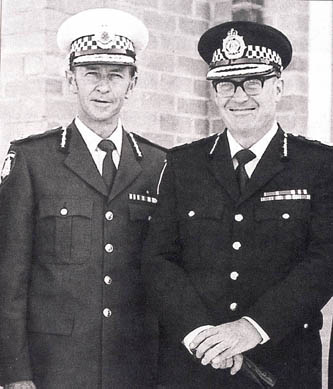 0
0 -
"Commissioner" ranks in the Metropolitan Police have blue cushioning to the rank Crown and have done for a great many years. The colouring upon the Crowns of other items of insignia used by police in England & Wales is normally (but not always) red. The tunic suggests use by an English/Welsh Chief Constable. NOT an HMI. If worn by an HMI then there would be a monogrammed "HMI" positioned between the Crown and the wreath . I'm unsure of the relevance of the Queen's Police Medal being mentioned or the year 1980.
Dave.
Dave,
thanks for the input. I was only mentioning the QPM and 1980 as this might indicate that the tunic was worn after that date as the Commissioner of the Australian Federal Police. The combination of ribbons is very unusual and only fits Woods.
0 -
hello Dirk,
I saw your post, let's hope someone has an answer.
Succes,
Jef
Jef,
thanks so much. THe ABL forum was some help but I got in contact with a Belgian collector of Belgian general uniforms. He dates the tunic as immediately after WW II to 1950 based on the decorations. More info will follow but thanks for your help.
0 -
Dear fellow collectors:
I need some help with an ID. I have a tunic in my possession that according to its ribbons (Knight Commander of the Royal Victorian Order of the British Empire, Commander of the Order of the British Empire, Queens Police Medal, 1939-1945 Star, Burma Star, France and Germany Star, Defence Medal, War Medal, 1977 Jubilee Medal, Police Long Service and Good Conduct 1951-) must have belonged to Sir Colin Woods (see http://en.wikipedia.org/wiki/Colin_Woods).
A fellow collector pointed out that the red backing of the crowns on the shoulder board is inconsistent with the regalia worn by chief officers of the Met (they have a blue backing). As the Queen Police Medal was awarded in 1980 and is on the tunic only leaves the option that this tunic was worn in Woods' function as the first Commissioner as the Australian Federal Police (1979-82) or possible as HM Chief Inspector of the Constabulatory for England and Wales. Any suggestions? Thanks so much!
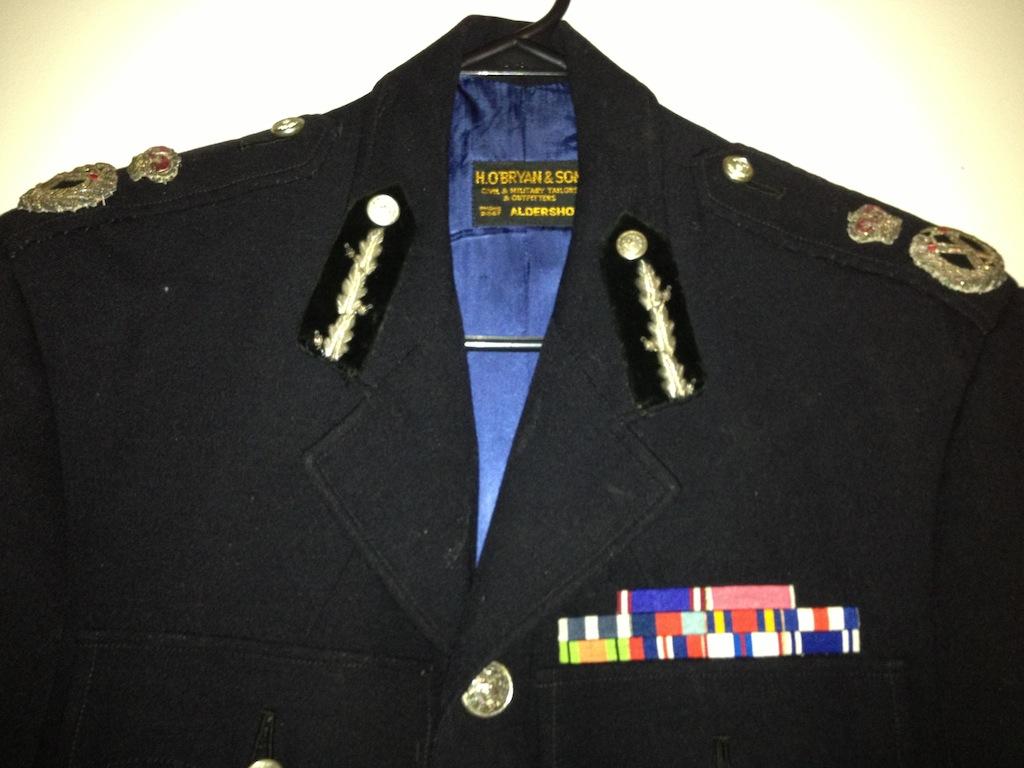 0
0



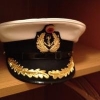
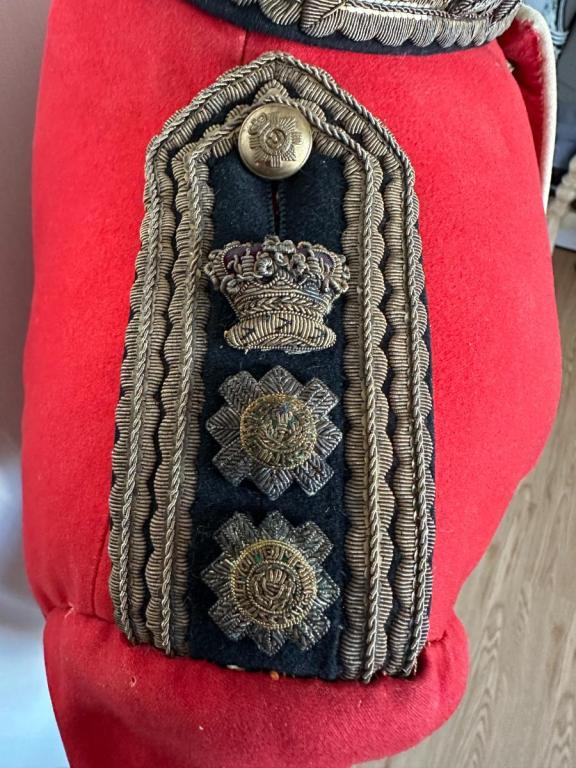
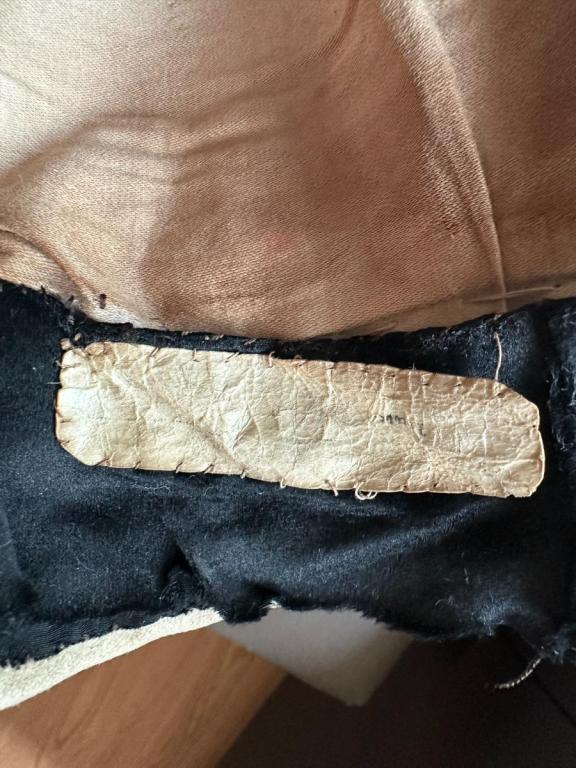
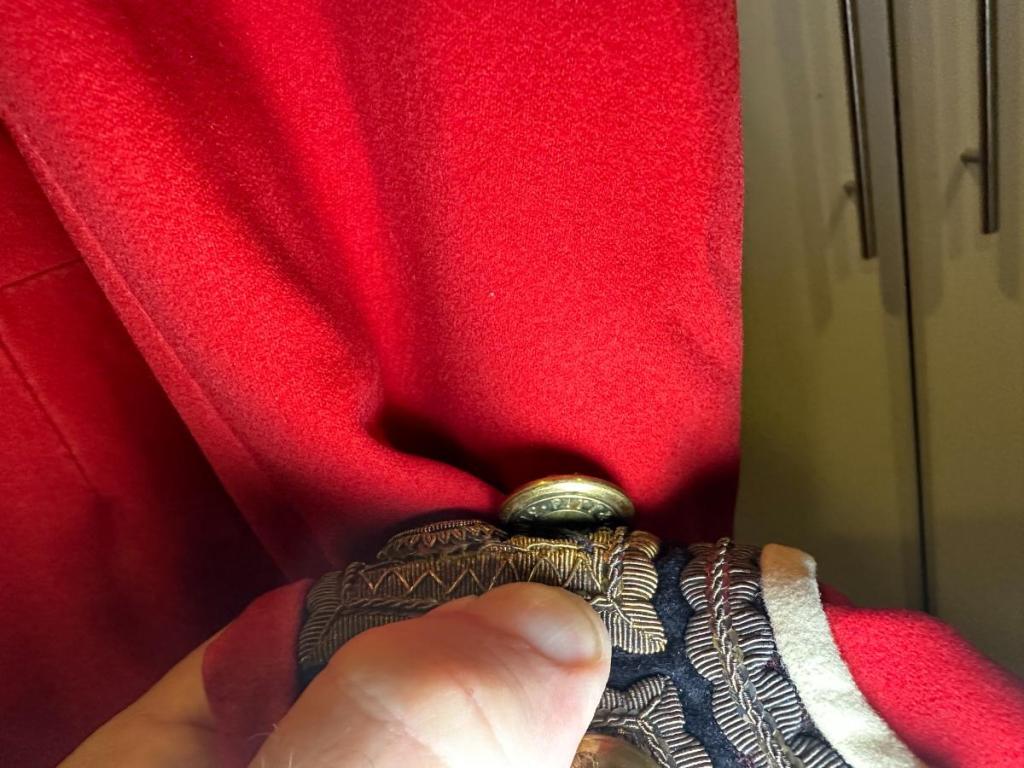
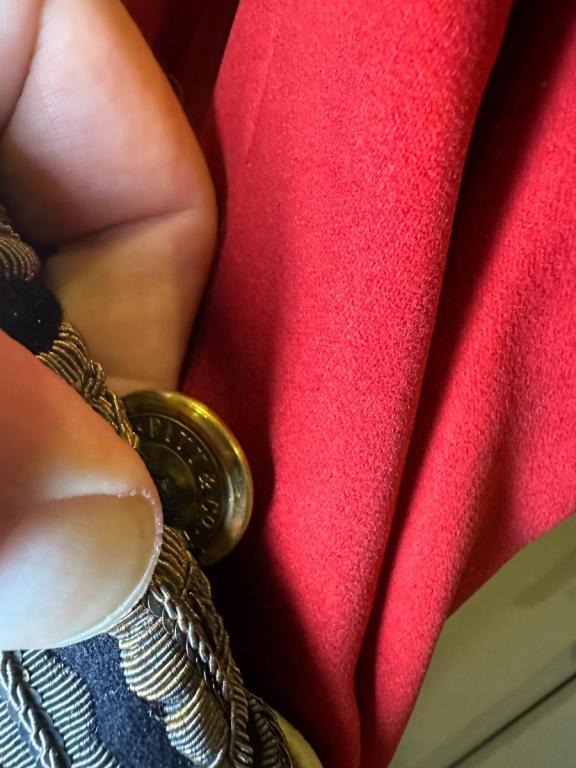
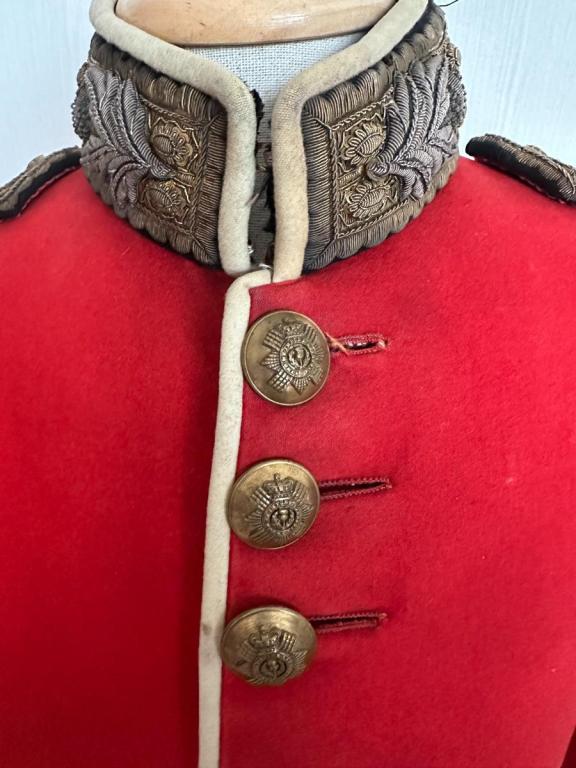

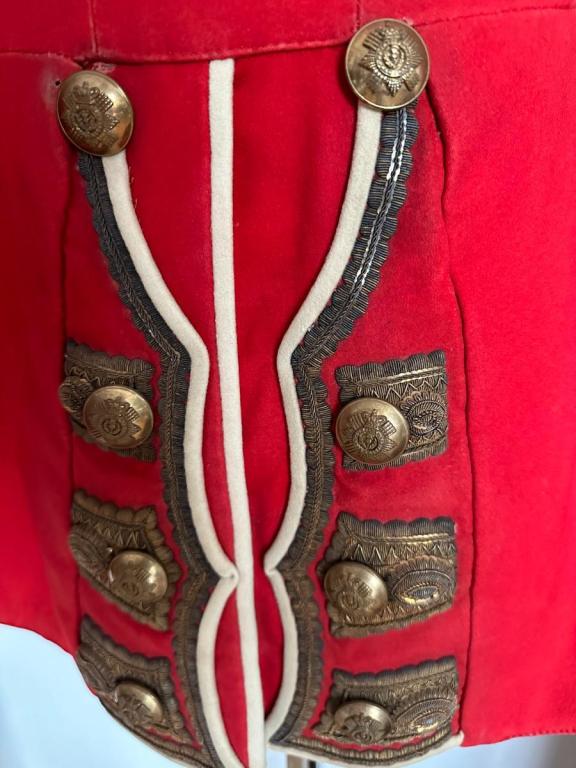
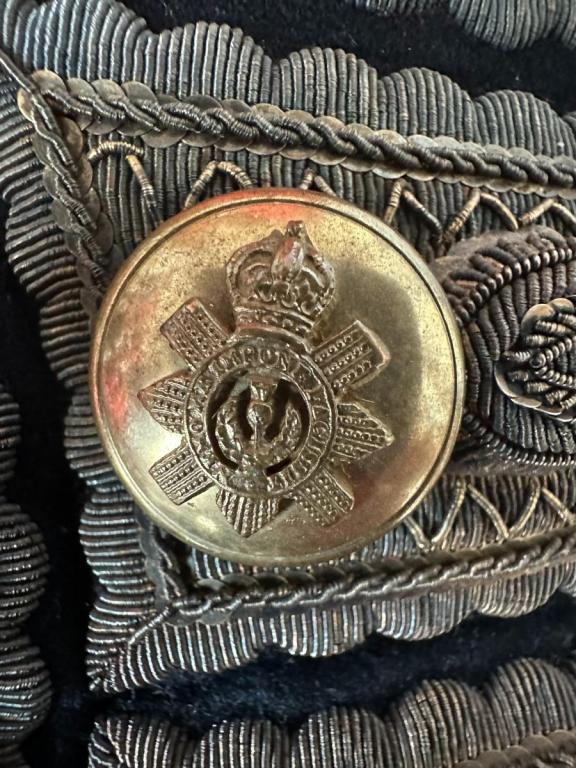
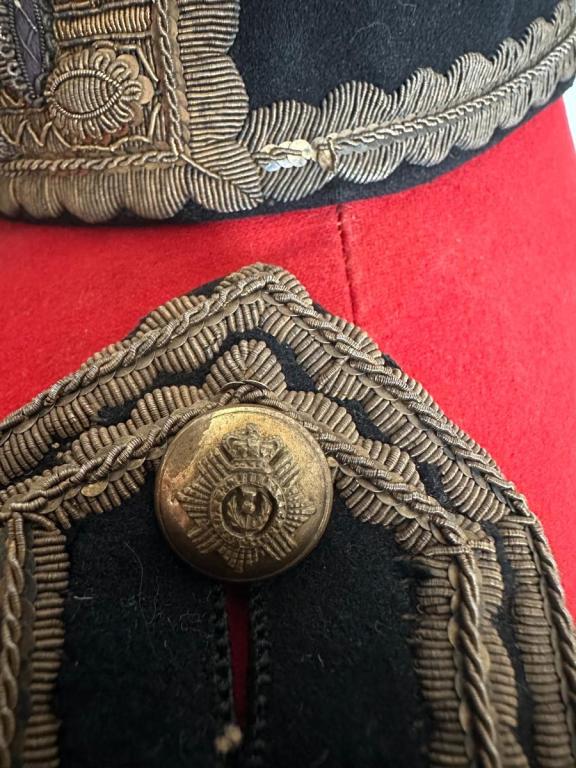
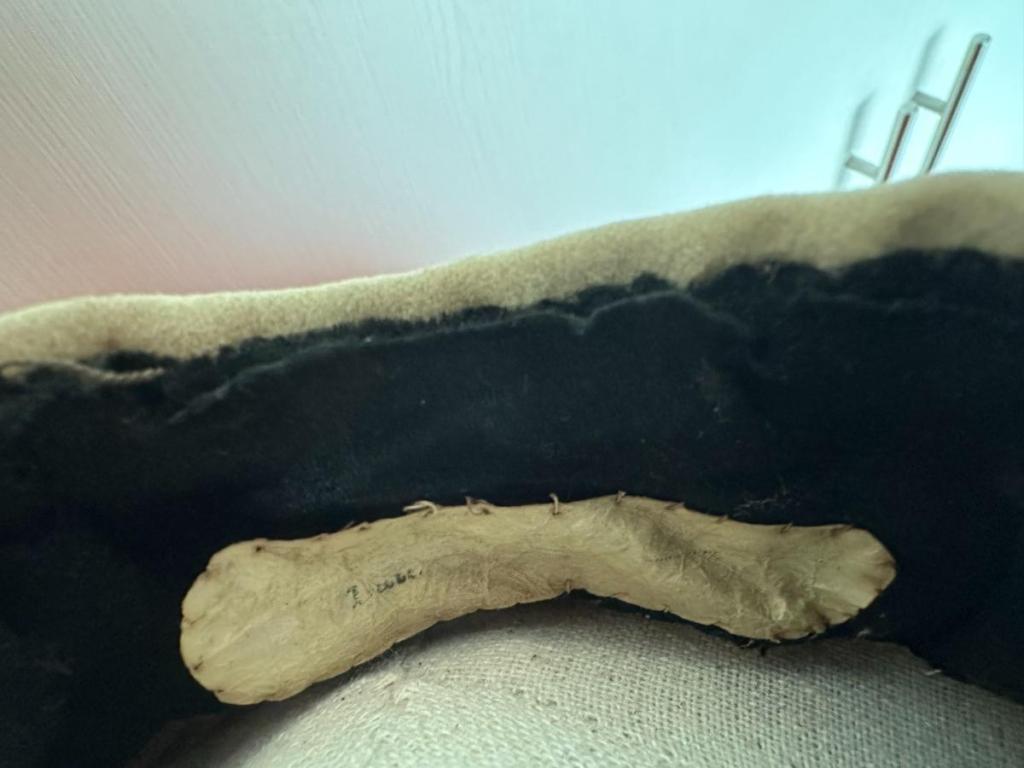
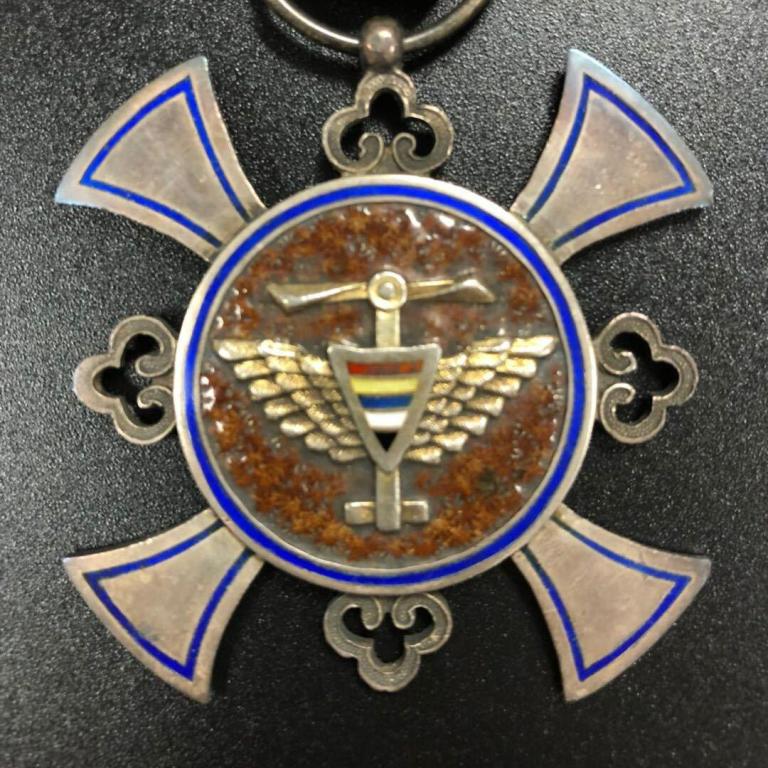
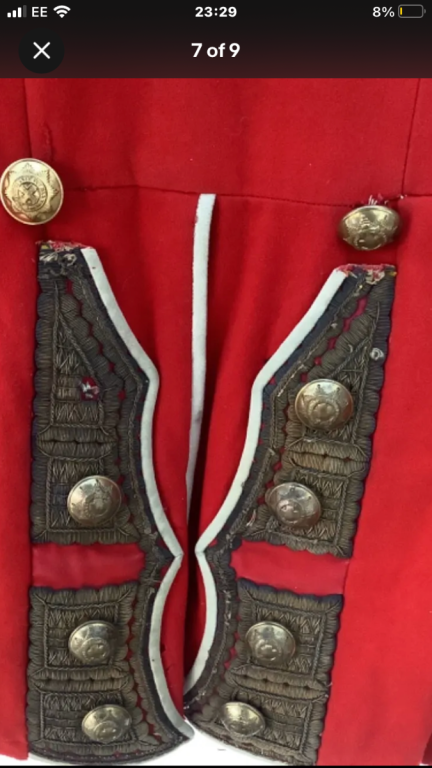

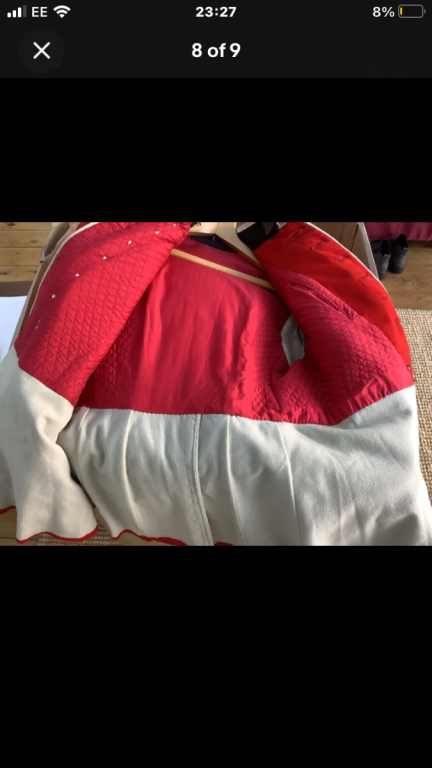

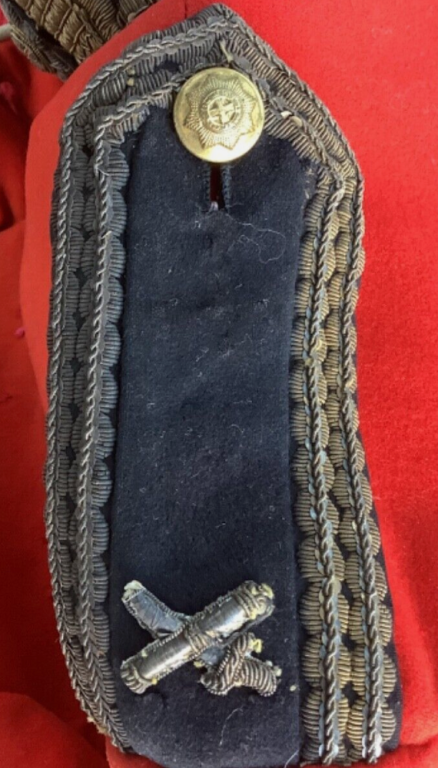
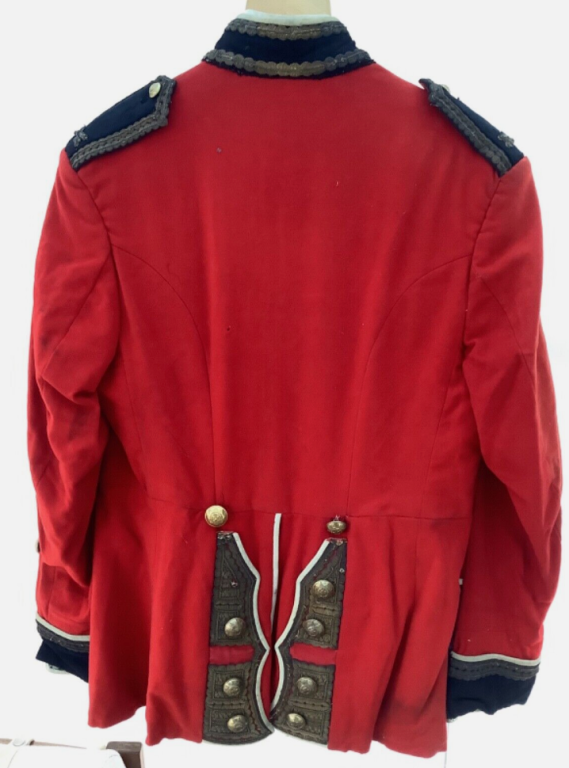
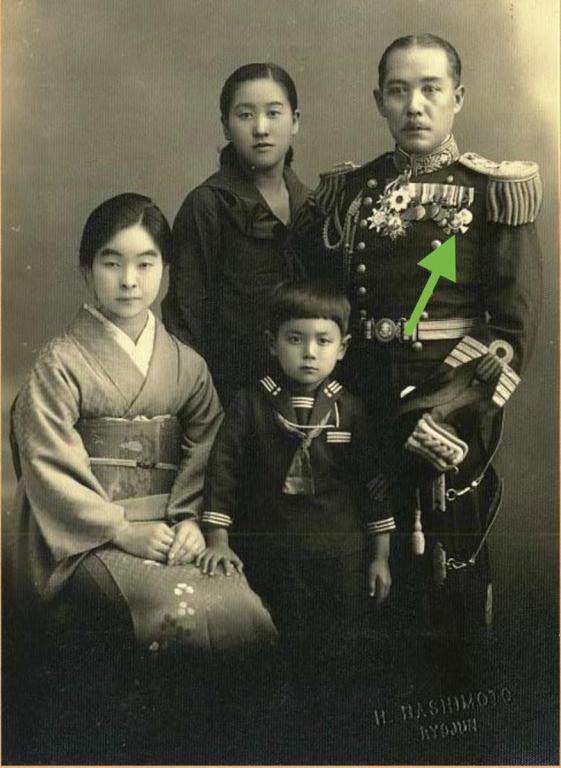
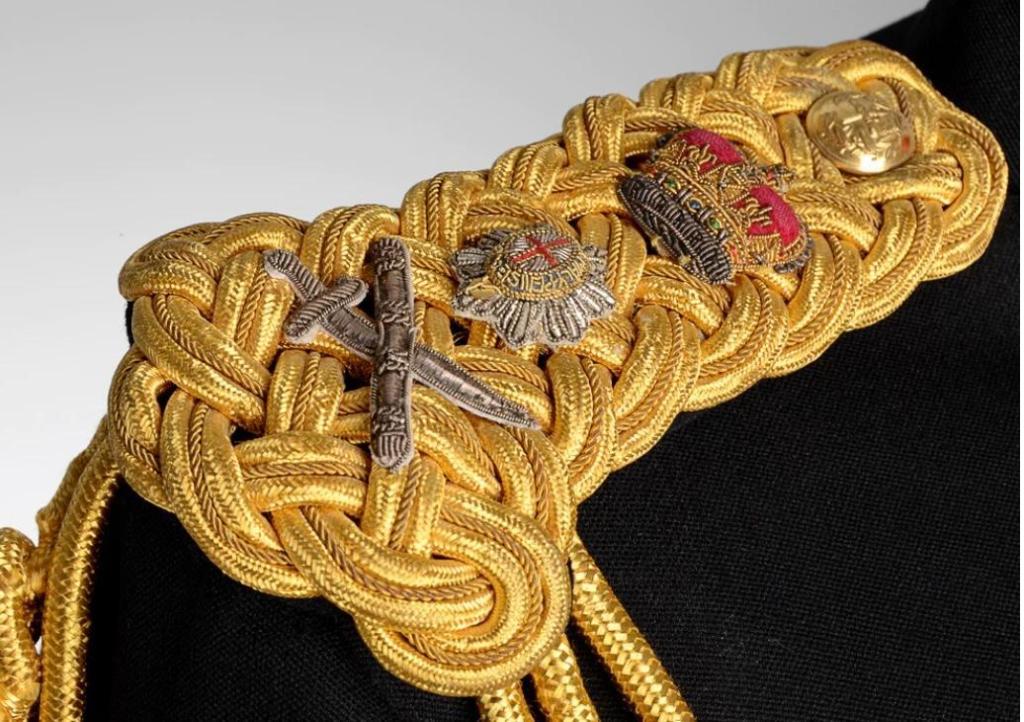
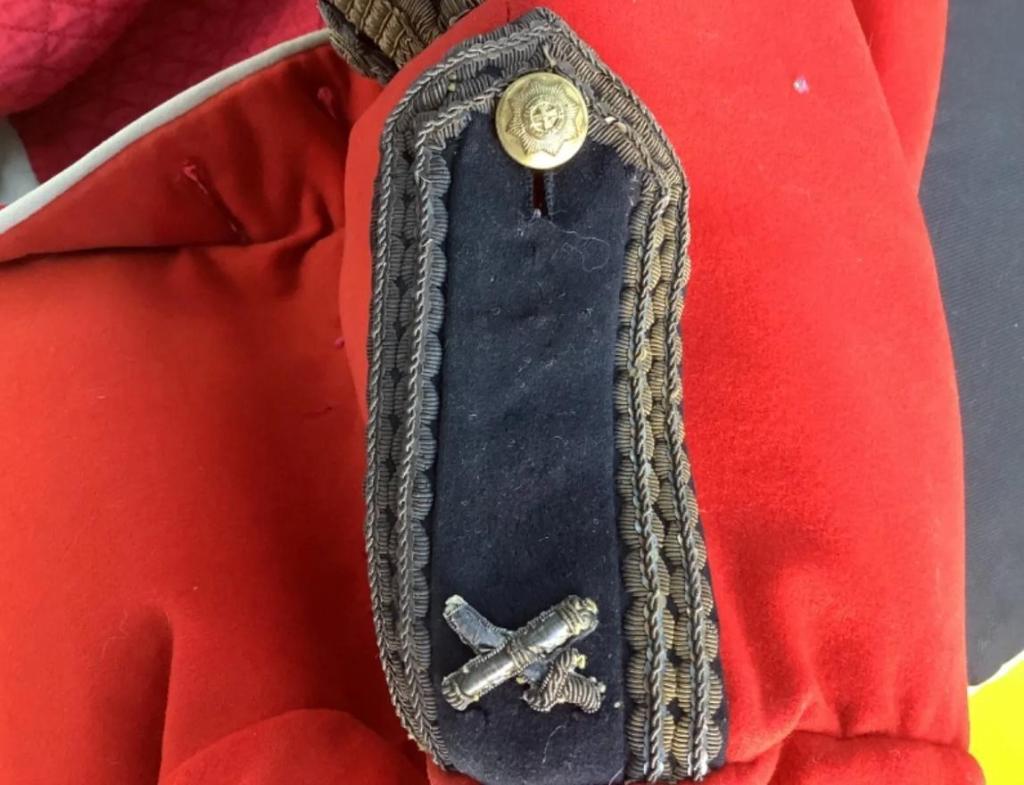
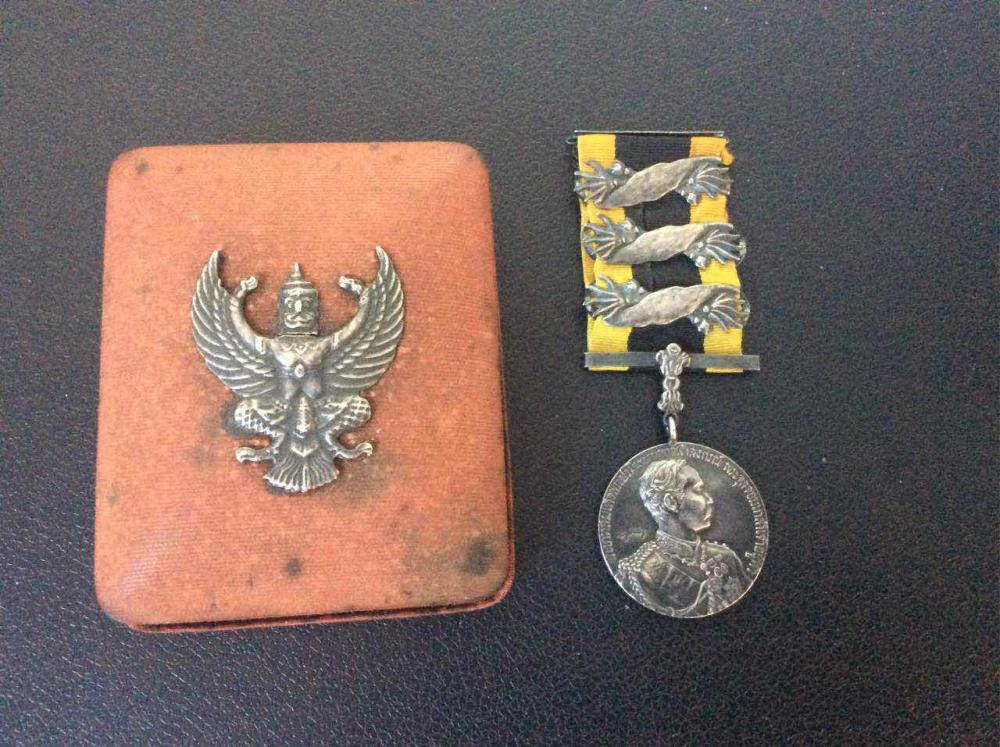

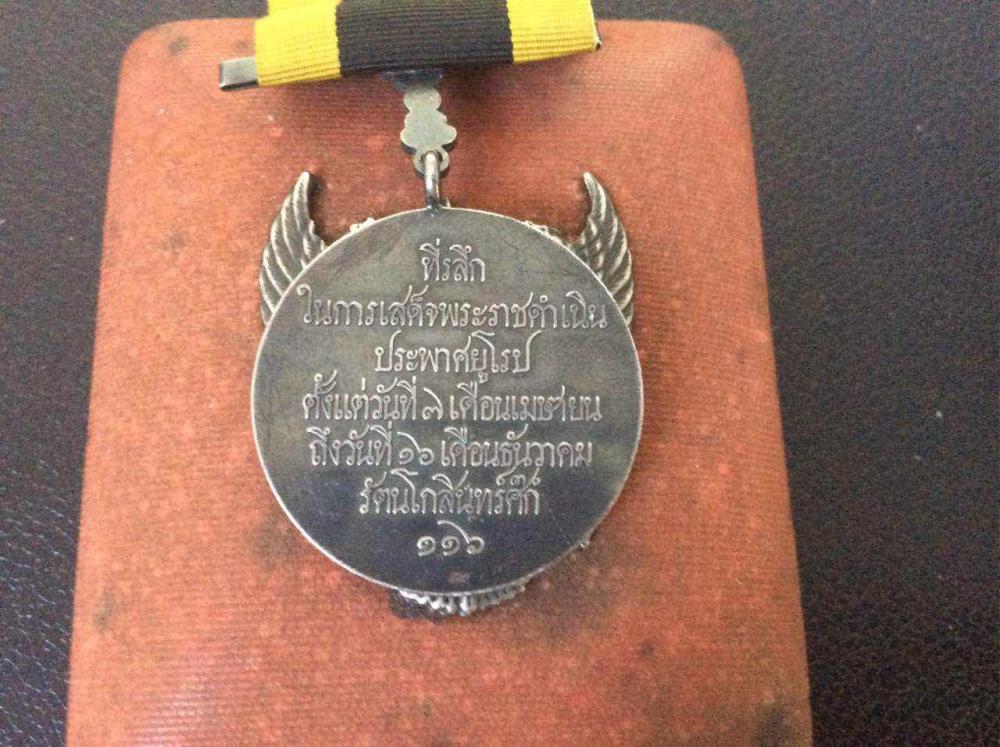
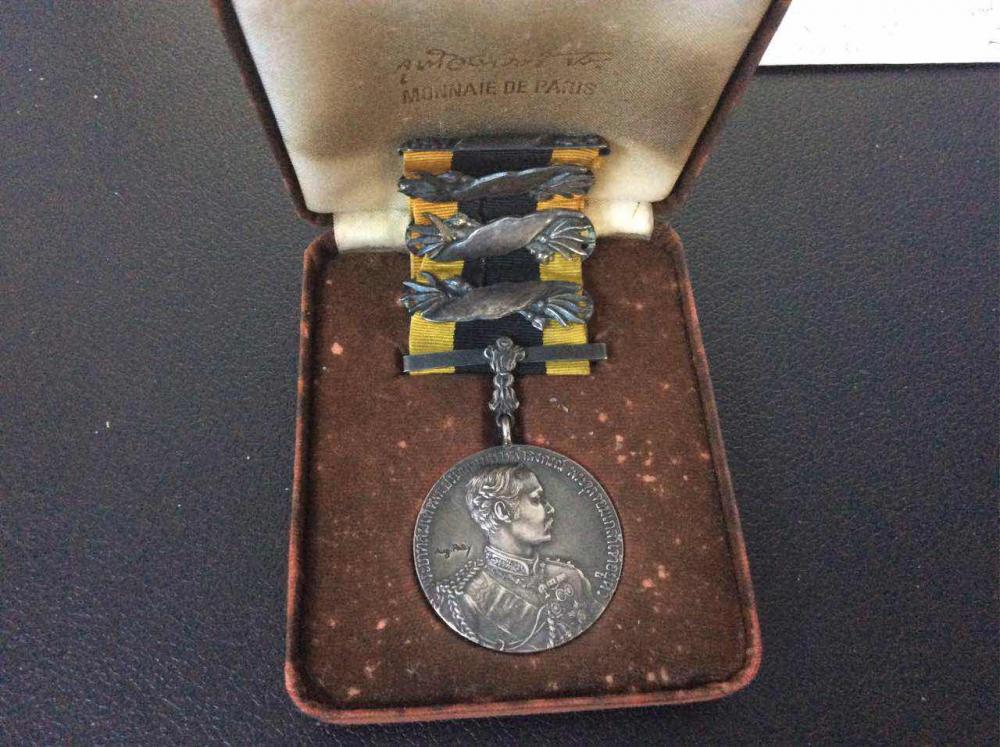
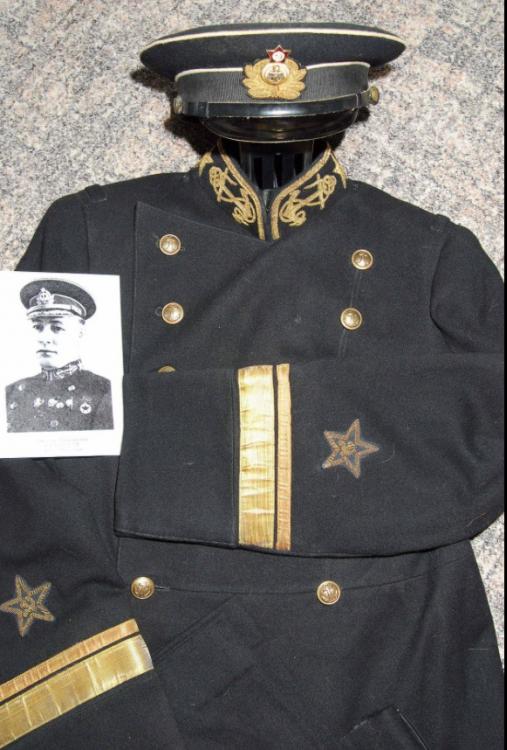
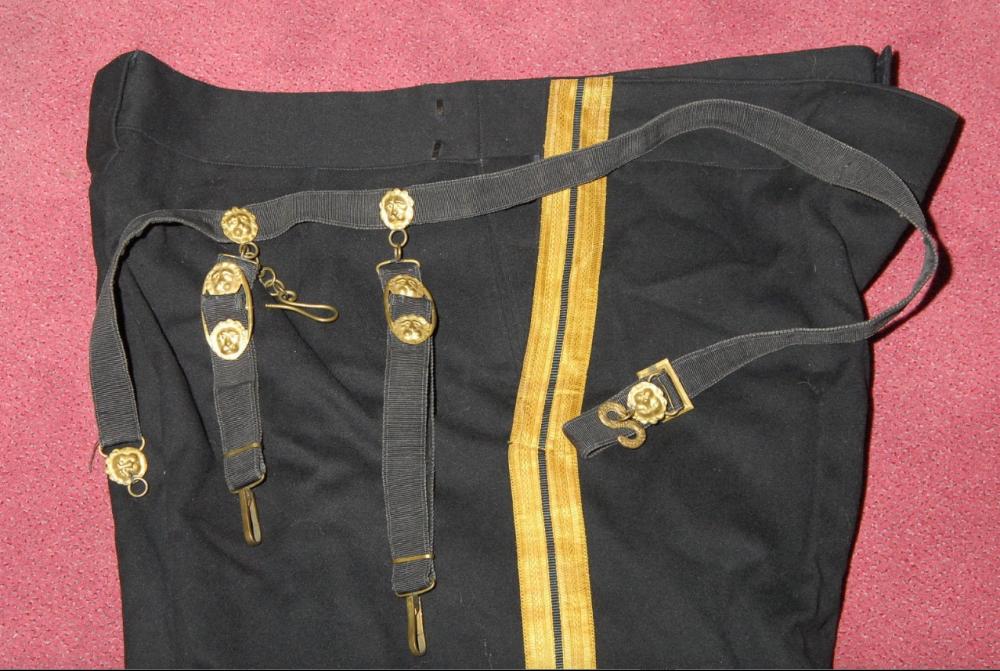
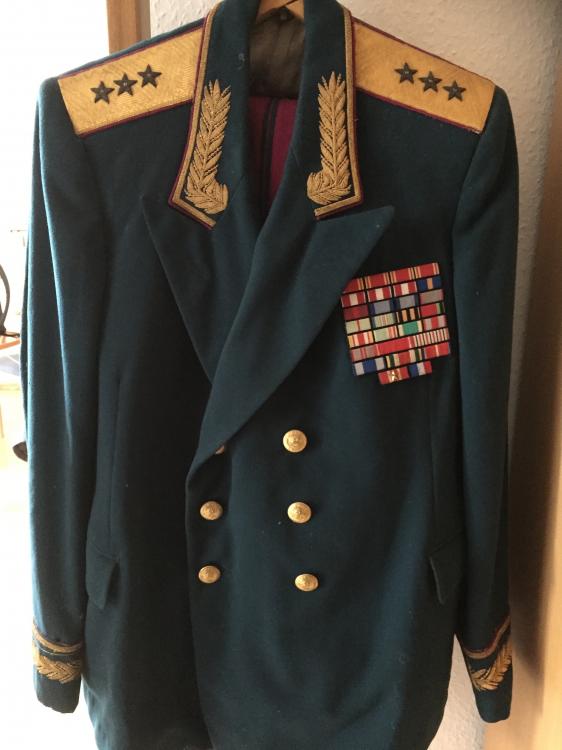
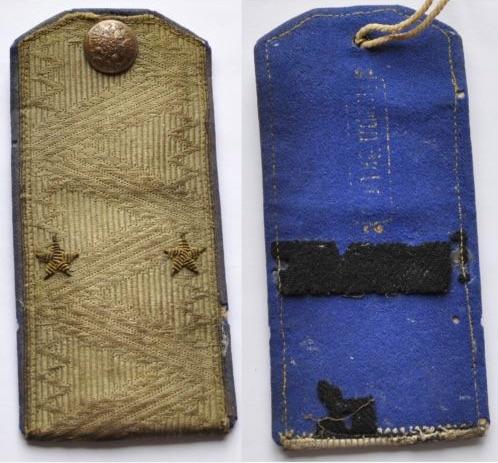
Tunic for Scots Guards Victorian Age - Question about buttons and tailor label
in Great Britain: Militaria: Badges, Uniforms & Equipment
Posted
Hi Tony, this is a beautiful tunic. I assume they used ink to add the name of the owned and sadly that is fading quickly.